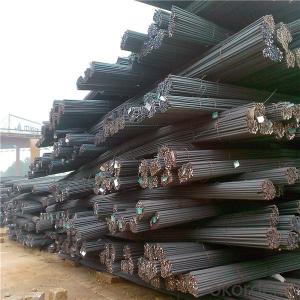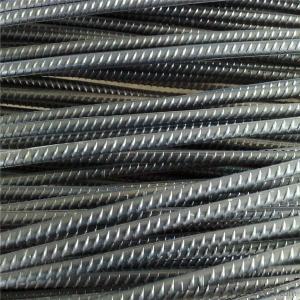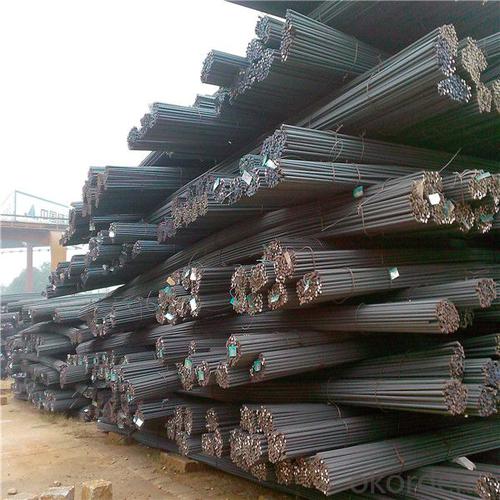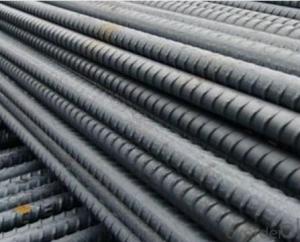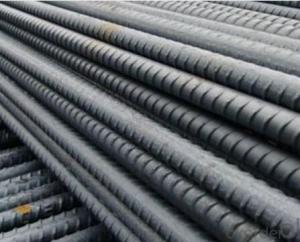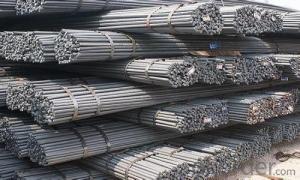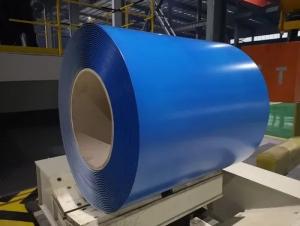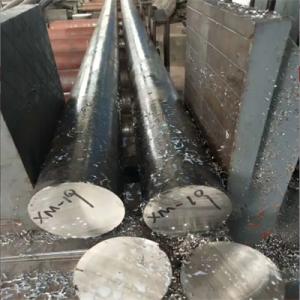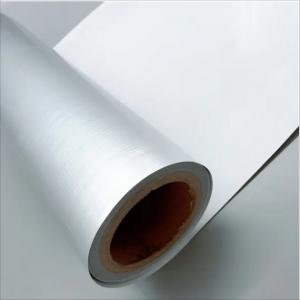Rebar Size Weight - Iron Rods for Construction in Different Grades
- Loading Port:
- Guangzhou
- Payment Terms:
- TT OR LC
- Min Order Qty:
- 100 m.t.
- Supply Capability:
- 18000 m.t./month
OKorder Service Pledge
OKorder Financial Service
You Might Also Like
Specification
Deformed Steel bar is a common steel reinforcing bar, used in reinforced concrete and reinforced masonry structures.
It is formed from mild steel, and is given ribs for better frictional adhesion to the concrete. The Deformed Steel bar is
an iron rod , a weldable plain reinforcing steel bar, and can be used as well for steel meshes
Our Advantage: High quality steel products from 1 class mills in China
Reasonable price
Professionalism of the products
On-time delivery
Complete documents and certificates
Sincere service to meet our clients' requirements
Product Description :
Chemical composition (%): | Steel | C | Si | Mn | P | S | Ceq | ||||
HRB335 |
0.25 |
0.80 |
1.60 |
0.045 |
0.045 | 0.52 | |||||
HRB400 | 0.54 | ||||||||||
HRB500 | 0.55 | ||||||||||
Mechanical properties | Steel | Rel/ MPa | Rm/ MPa | A/ % | Agt/ % | ||||||
≥ | |||||||||||
HRB335 | 335 | 455 | 17 |
7.5 | |||||||
HRB400 | 400 | 540 | 16 | ||||||||
HRB500 | 500 | 630 | 15 | ||||||||
Package: | Standard export packing or as customer's request | ||||||||||
Application: | Construction, building, bridge, road. ect | ||||||||||
Payment terms | 1).100% irrevocable L/C at sight. | ||||||||||
Delivery time | 15-30 days after receipt of L/C or deposit by T/T | ||||||||||
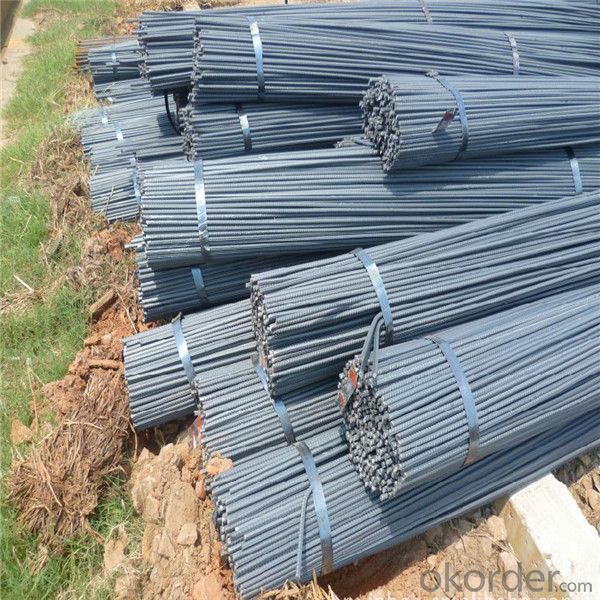

Packing:
In bundles, each bundle weight 3.5 tons. Load by container or by bulk verssel.
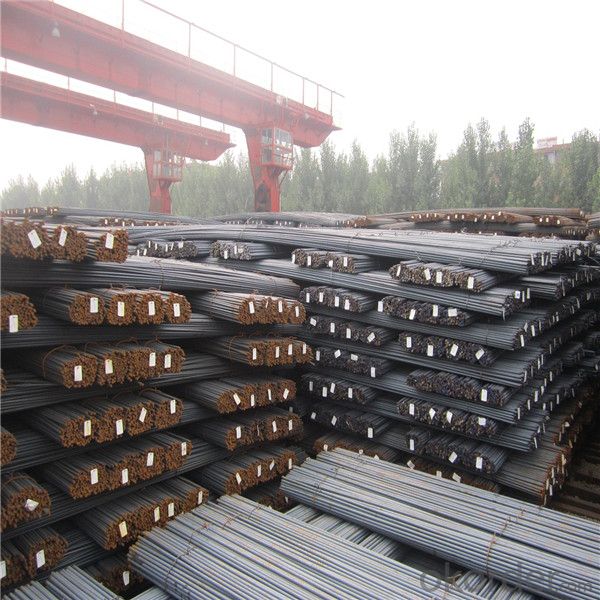
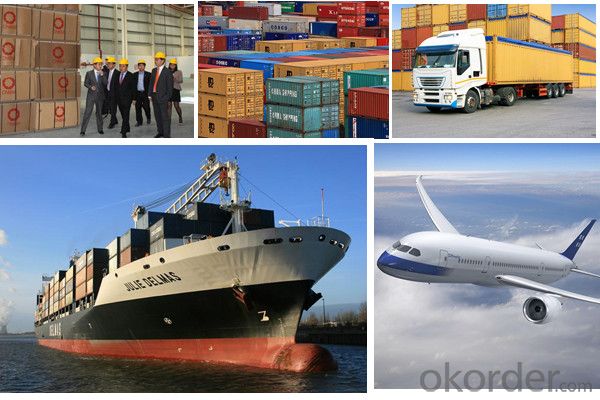
Our service
(1) We cooperate with famous factories with advanced equipment and well trained workers.
(2) We can provide factory price with trading company service.
(3) We continuously work on the improvement of our processes, guaranteeing consistently high standards
of quality to keep none compensation.
(4) We guarantee 24 hours response and 48 hours solution providing service.
(5) We accept small order quantity before formal cooperation.
(6) We deliver the agreed quality at the agreed time, reacting to changes in customer wishes in a flexible way.
(7) Due to our volume and selling power, we have excellent freight rates with shipping lines.
(8) We strive to always be fair and honest in our dealings with customers.
(9) We strive to work together with customers to achieve much more than we can achieve alone.
(10) Through our passion and commitment we aim to be a market leader in all our key markets. To maintain
our position as market leader we must continue to add value in all that we do.
FAQ:
1.Q: What's your MOQ(minimum order quantity)?
A: One full container, mixed acceptable .
2. Q: What's your packing methods?
A: Packed in bundle or bulk ..
3. Q: How can I buy CNBM products in my country?
A:Please send us an inquiry or email ,we will reply to you if there is distributor in your country
4. Q: Can we visit your factory?
A: Warmly welcome. Once we have your schedule, we will arrange the professional sales team to follow up your case.
5. Q: How long does it take to get the product if i place an order?
A:With the process of your requirements,we will pack and deliver in 3-7 days. If it is by sea shipment,it will take 15-45 days depending on different locations
- Q:Can steel rebars be used in the construction of railway or subway systems?
- Yes, steel rebars can be used in the construction of railway or subway systems. Steel rebars, also known as reinforcement bars, are commonly used in construction projects to provide strength and durability to concrete structures. In the case of railway or subway systems, steel rebars are often used to reinforce the concrete foundations, pillars, beams, and other structural components of the infrastructure. The use of steel rebars helps to enhance the structural integrity and load-bearing capacity of the railway or subway system, ensuring its safety and longevity. Additionally, steel rebars are also corrosion-resistant, which is crucial in environments where there may be exposure to moisture or chemicals. Therefore, steel rebars are a reliable and commonly used material in the construction of railway or subway systems.
- Q:Can steel rebars be used in structures with limited foundation support?
- Yes, steel rebars can be used in structures with limited foundation support. Steel rebars are commonly used as reinforcement in concrete structures to enhance their strength and durability. In structures with limited foundation support, the steel rebars can help distribute the load more evenly throughout the structure, minimizing the stress on the foundation. Additionally, the use of steel rebars can also increase the overall stability of the structure. However, it is important to note that the design and placement of the rebars should be done by a qualified engineer to ensure that they are properly integrated into the structure and can effectively bear the load.
- Q:What is the tensile strength of different grades of steel rebars?
- The tensile strength of different grades of steel rebars can vary, but generally, it ranges from 400 to 600 megapascals (MPa).
- Q:Can steel rebars be used in high-strength concrete?
- Yes, steel rebars can be used in high-strength concrete. In fact, they are commonly used as reinforcement in high-strength concrete structures to enhance the overall strength and durability of the concrete.
- Q:How do steel rebars help in preventing cracks in concrete?
- Steel rebars help in preventing cracks in concrete by providing reinforcement and increasing the tensile strength of the structure. When concrete is subjected to tensile forces, it tends to crack. However, the presence of steel rebars within the concrete helps distribute these forces, absorbing the tension and preventing cracks from forming or growing. The rebars act like a skeleton, enhancing the structural integrity and durability of the concrete, ensuring it can withstand various loads and external pressures without significant damage.
- Q:Can steel rebars rust or corrode over time?
- Yes, steel rebars can rust or corrode over time due to exposure to moisture, oxygen, and other environmental factors.
- Q:How do steel rebars contribute to the overall seismic resistance of a structure?
- The overall seismic resistance of a structure is significantly enhanced by the presence of steel rebars. When an earthquake happens, the structure is subjected to strong lateral forces and vibrations. If these forces are not properly addressed, the structure may deform or even collapse. To prevent this, reinforcement bars, also known as steel rebars, are utilized to strengthen and stabilize concrete structures. One of the main advantages of steel rebars is their ability to absorb and distribute seismic energy. During an earthquake, the rebars act as a backbone within the concrete, effectively absorbing the seismic forces and preventing excessive deformation of the structure. By distributing the energy throughout the entire structure, the rebars reduce localized stress and prevent concentrated damage. Additionally, steel rebars enhance the ductility of a structure. Ductility refers to a material's ability to deform without breaking. When an earthquake occurs, the ground shakes, causing the structure to sway. Steel rebars improve the ductility of concrete by providing an extra pathway for the energy to dissipate. This allows the structure to absorb and release the seismic energy by deforming in a controlled manner, ensuring its integrity and minimizing damage. Furthermore, steel rebars increase the tensile strength of concrete. While concrete is strong in compression, it is weak in tension. Steel rebars counteract this weakness by providing tensile strength to the structure. When an earthquake happens, the rebars bear the tensile forces and prevent the concrete from cracking or collapsing under tension. This reinforcement ensures that the structure remains stable and resilient during seismic events. In conclusion, steel rebars play a crucial role in enhancing the overall seismic resistance of a structure. They absorb and distribute seismic energy, improve the ductility of concrete, and increase its tensile strength. By including steel rebars in the construction process, the structure becomes capable of withstanding the lateral forces and vibrations caused by earthquakes, reducing the risk of damage or collapse.
- Q:How do steel rebars impact the overall constructability and scheduling of concrete projects?
- Steel rebars have a significant impact on the overall constructability and scheduling of concrete projects. They provide structural reinforcement to concrete, increasing its strength and durability. The inclusion of rebars in the concrete design requires careful planning and coordination, as they need to be accurately positioned and supported within the concrete forms. This process can add complexity to the construction process, potentially affecting the project's timeline. However, rebars ultimately enhance the project's constructability by ensuring the structural integrity of the concrete elements, leading to safer and more reliable structures.
- Q:How do steel rebars affect the overall construction cost of residential buildings?
- The overall construction cost of residential buildings can be significantly influenced by steel rebars. To begin with, steel rebars play a vital role in reinforced concrete structures by adding strength and durability. However, the cost of steel rebars can vary depending on factors such as size, grade, and the quantity required for the project. The inclusion of steel rebars in residential buildings can lead to increased construction costs due to expenses related to their purchase and installation. The cost of steel itself is subject to market fluctuations and can change over time. Furthermore, the complexity of the design and the amount of reinforcement needed can also impact the overall cost. Moreover, the installation of steel rebars involves skilled labor, which further contributes to construction expenses. The process of cutting, bending, and placing rebars requires expertise and precision, which adds to the cost of labor. Additionally, the time required for proper installation can affect the construction schedule, potentially resulting in additional expenses if there are delays. However, it is important to note that although steel rebars may initially increase the upfront construction cost of residential buildings, their long-term benefits outweigh the initial expenses. Reinforced concrete structures with steel rebars offer improved resistance against structural failures, such as cracking or collapsing, which can save significant costs in terms of future repairs and maintenance. In conclusion, steel rebars are essential components in residential construction as they enhance the strength and durability of reinforced concrete structures. While their use may increase the initial construction cost, the long-term advantages in terms of structural integrity and reduced maintenance expenses justify their inclusion in residential building projects.
- Q:What are the different types of splices used for steel rebars?
- There are several types of splices used for steel rebars, including lap splices, mechanical splices, and welded splices. Lap splices involve overlapping two rebars and securing them with tie wires or rebar clamps. Mechanical splices use couplers or threaded sleeves to connect rebars together, providing a more reliable and efficient connection. Welded splices involve welding the ends of rebars together, creating a strong and permanent connection. The choice of splice type depends on factors such as project requirements, rebar size, and construction methods.
1. Manufacturer Overview |
|
|---|---|
| Location | |
| Year Established | |
| Annual Output Value | |
| Main Markets | |
| Company Certifications | |
2. Manufacturer Certificates |
|
|---|---|
| a) Certification Name | |
| Range | |
| Reference | |
| Validity Period | |
3. Manufacturer Capability |
|
|---|---|
| a)Trade Capacity | |
| Nearest Port | |
| Export Percentage | |
| No.of Employees in Trade Department | |
| Language Spoken: | |
| b)Factory Information | |
| Factory Size: | |
| No. of Production Lines | |
| Contract Manufacturing | |
| Product Price Range | |
Send your message to us
Rebar Size Weight - Iron Rods for Construction in Different Grades
- Loading Port:
- Guangzhou
- Payment Terms:
- TT OR LC
- Min Order Qty:
- 100 m.t.
- Supply Capability:
- 18000 m.t./month
OKorder Service Pledge
OKorder Financial Service
Similar products
New products
Hot products
Hot Searches
Related keywords
